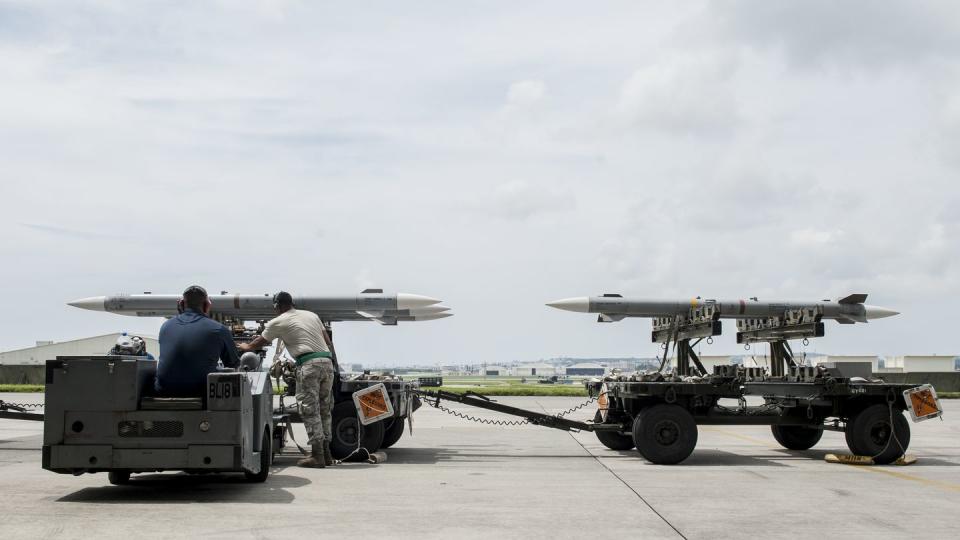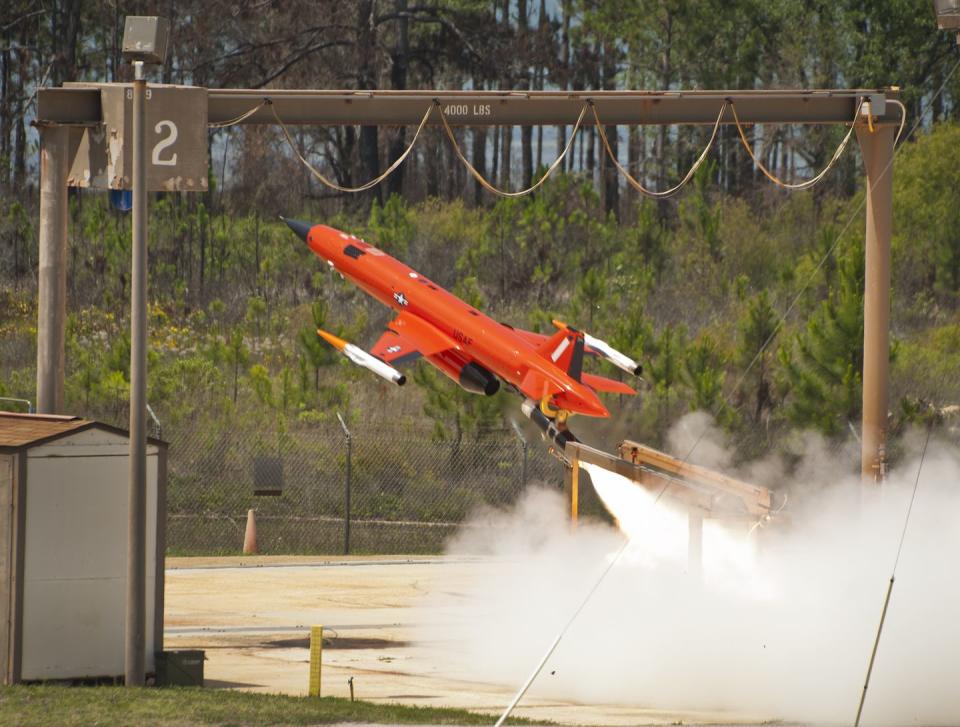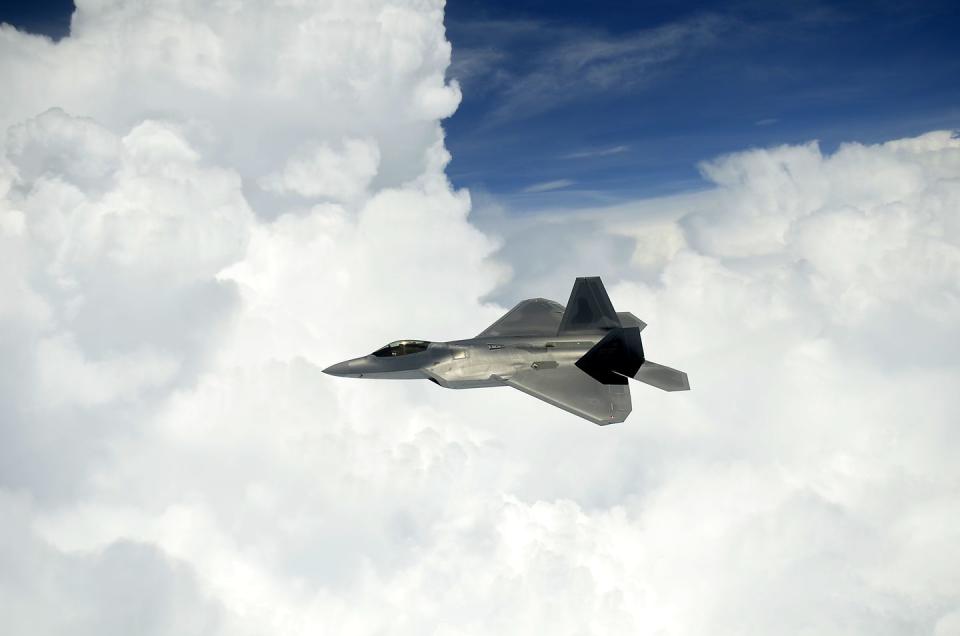An F-15 Just Made the World’s Longest Missile Shot
The U.S. Air Force recently claimed the world’s farthest missile shootdown.
The incident involved an F-15 Eagle shooting down a target drone.
The Eagle fired an AIM-120 AMRAAM missile, and newer versions of the F-15 can carry a dozen or more into combat.
The U.S. Air Force has claimed the world’s longest air-to-air missile shot: an F-15 Eagle fighter taking down a BQM-167 target drone. However, the Air Force didn’t disclose the actual distance of the shot, so we can’t verify the world record claim for accuracy.
✈ You love badass planes. So do we. Let’s nerd out over them together.
In March, an F-15C Eagle based at Tyndall Air Force Base in Florida launched an AIM-120 Advanced Medium-Range Air-to-Air Missile (AMRAAM) at a subscale BQM-167 target drone over the Eglin Test and Training Range, according to an official Air Force statement. The missile shot was a joint exercise involving the 28th Test and Evaluation Squadron and the 83d Fighter Weapons Squadron.
The AIM-120 AMRAAM first debuted in the 1980s as a replacement for the AIM-7 Sparrow missile. The AMRAAM is one of the first air-to-air missiles with its own radar in the nose, which allows the missile to guide itself to its target. The Sparrow, by comparison, required the fighter launching the missile to keep its radar locked onto the target. Many American and Allied fighter aircraft are armed with the one-two punch of short-range AIM-9X Sidewinder and long-range AIM-120 AMRAAM missiles.

Unlike the Sidewinder and other missiles, the Air Force never gave the AMRAAM an official—read: cooler—name. Informally, it’s known as the “Slammer.”
The AMRAAM has steadily improved over the decades. While the original AMRAAM had a range of about 30 to 40 miles, the latest AIM-120D version can travel 99 miles, per The Aviationist.
The BQM-167 “Skeeter” is a subscale target drone designed to replicate enemy aircraft during live missile exercises. The Skeeter is powered by a MicroTurbo Tri 60-5+ turbine engine, has a top speed of Mach .92 (705 miles per hour), and reaches a maximum altitude of 50,000 feet. The drone can turn up to 9Gs while evading other aircraft and missiles, and can even pop its own chaff and flares in an attempt to distract incoming threats.

The U.S. military, as it gears up to deter China and Russia’s large conventional forces, is attempting to extend the useful range of all weapons, from howitzers to air-to-air missiles. The goal is to deliver firepower at longer ranges than the enemy can. Theoretically, a force that out-sticks its opponent can land blows without fear of being struck back, while the side with the shorter-range weapons can’t do the same without exposing themselves to enemy fire.
The Air Force says the missile test was in response to a request to explore “long-range kill chain” capabilities. A “kill chain” consists of the sensors, communications, and weapons that work together to target enemy forces.
For example, an F-15 and F-22 Raptor tasked with shooting down a Skeeter might be first alerted to the drone’s location by an E-3 AWACS early warning and control plane, with the information passed by satellite. The two jets might also receive more information about the target from a nearby Marines Corps F-35B fighter jet and a nearby Navy frigate.
The AWACS veers away to safety and the F-15/F-22 team slides into place. The F-22 moves in, picks up the Skeeter, and tracks it while remaining invisible to the enemy’s radar. The F-15 launches the AMRAAM based on data provided by the F-22, and the AMRAAM shoots down the drone.
The latest version of the F-15, disappointingly called the F-15EX Eagle II, can carry 12 or more AMRAAMs, meaning the F-15EX/F-22 team could repeat the scenario a dozen times before the F-22 has to fire a shot.

In this scenario, the two fighters, AWACS, satellites, F-35B, Navy frigate, and AMRAAM missile are all links in the “kill chain” that leads to the destruction of the target drone. Kill chains allow adversaries to be detected and destroyed at greater distances than if just one fighter was chasing the drone—ideally “out-sticking” the enemy.
The Air Force’s press release doesn’t mention if there were other assets, like those in the example above, working as part of this test’s kill chain. The F-15C almost certainly did have silent partners in the exercise. Still, it would be nice to know exactly how far the world record distance for an air-to-air missile shot is.
🎥 Now Watch This:
You Might Also Like

